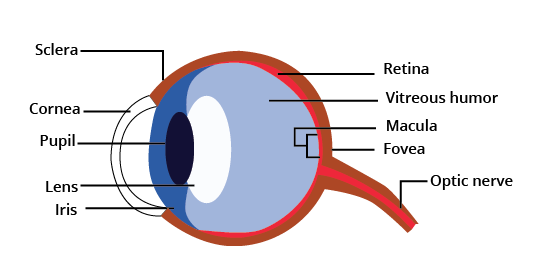CBSE Class 8 Science Light Notes Chapter 13 - FREE PDF Download
FAQs on Light Class 8 Notes: CBSE Science Chapter 13
1. What makes things visible according to Class 8 Science Chapter 13 Notes?
We can see an object only after the light reaches our eye after striking any object. Also, objects appear in different colours because they can absorb a few colours and transmit or reflect the other colours.
2. State the two laws of reflection in Light Chapter Class 8 Notes.
The two laws of reflection are:
The angle of incidence is equal to the angle of reflection
The reflected ray, the incident ray, and the normal line- all lie in the same place.
The two laws are explained diagrammatically and proven in a step-by-step manner in the notes of Light class 8.
3. What are the Characteristics of an image formed on a plane mirror in Light Chapter Class 8 Notes.
The image formed on a plane mirror are:
Virtual
Erect
Is of the same size as the object
4. How does light travel, and why does it exhibit both wave and particle characteristics in Light Chapter Class 8 Notes?
Light travels in the form of electromagnetic waves. The wave-particle duality of light is explained by quantum theory, where light behaves both as waves and particles called photons, depending on the experimental conditions.
5. What is the difference between reflection and refraction of light, and can you provide real-life examples of each?
Reflection occurs when light bounces off a surface, like a mirror. Refraction, on the other hand, involves the bending of light as it passes through different mediums, such as air to water. Real-life examples include seeing your reflection in a mirror (reflection) and the bending of a straw in a glass of water (refraction).
6. What do the Class 8 Science Chapter Light Notes cover?
The Class 8 Science Chapter Light Notes cover essential topics such as how light travels, reflection, refraction, and the formation of shadows. These Light Chapter Class 8 Notes help students understand the behaviour of light in various situations.
7. Are the Class 8 Science Chapter 13 Notes aligned with the CBSE syllabus?
Yes, the Class 8 Science Chapter 13 Notes are designed according to the latest CBSE syllabus. They include all the key concepts needed for understanding light, ensuring students stay on track with their studies.
8. Can I download the Light Notes Class 8 PDF?
Yes, the Light Notes Class 8 PDF is available for download. This allows students to access the notes offline and study at their convenience.
9. How can the Class 8 Science Chapter Light Notes help with exam preparation?
The Class 8 Science Chapter Light Notes simplify complex ideas about light, making it easier to understand and remember key concepts, which helps in better exam preparation.
10. What topics are included in the Light Chapter Class 8 Notes?
The Light Chapter Class 8 Notes include topics like the nature of light, reflection, refraction, and how light forms shadows. These topics are essential for a complete understanding of light.
11. Are there any practice questions in the Class 8 Science Chapter 13 Notes?
Yes, the Class 8 Science Chapter 13 Notes often include practice questions to help students test their understanding and reinforce their learning.
12. How do I use the Light Notes Class 8 PDF effectively?
To use the Light Notes Class 8 PDF effectively, review the notes regularly, refer to the key concepts, and solve any practice questions provided. This will help reinforce your understanding and prepare you for exams.























